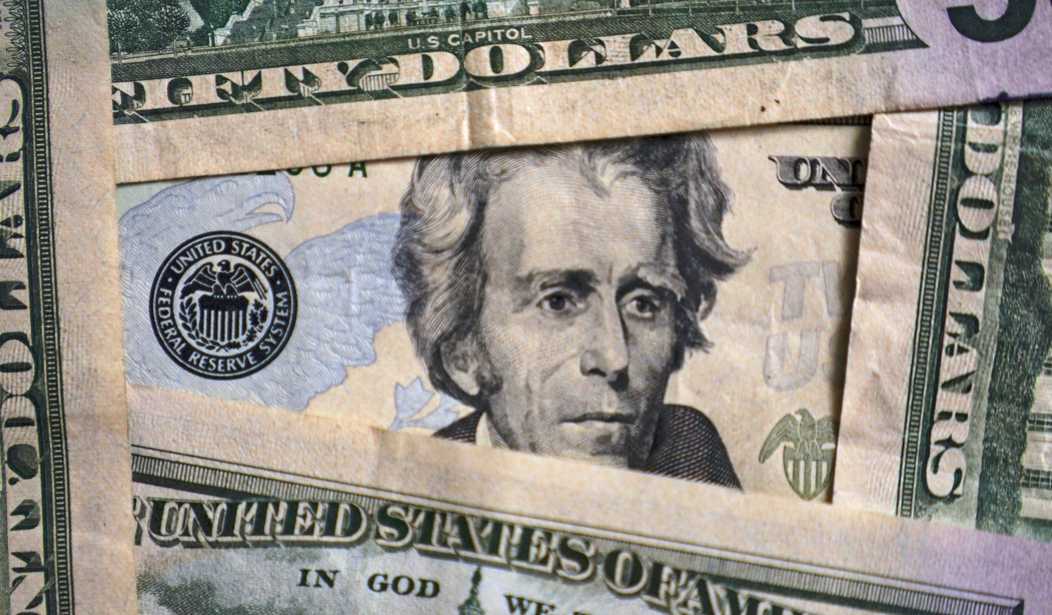Introduction
The U.S. national debt is $35.97 trillion, $106,538 per man, woman, and child or U.S. citizen, and almost $273,000 per U.S. taxpayer. Deficits of $2 trillion or more are built into future federal budgets through 2035, according to the Congressional Budget Office. Interest on the national debt this fiscal year will exceed $1 trillion, making it the third most significant item in the current federal budget.
When you ask a politician, regardless of political party, why they do not campaign for policies to reduce the national debt, the typical answer is that Americans do not care about the national debt. While this may be their assertion, we firmly disagree. The average citizen does not understand the size and scope of the U.S. national debt and what it means for the stability and future of our great country. It took over 200 years for the cumulative national debt of the U.S. to surpass $1 trillion in 1981. The national debt went from roughly $1 trillion in 1981 to $5.6 trillion in 2000. From 2000 to today, the U.S. national debt has increased by $30.4 trillion in less than 24 years, with roughly $16 trillion of the U.S. national debt generated by President Trump and Biden. In 1980, the national debt of the U.S. was 34.7% of Gross Domestic Product (GDP), while today, it is 122.84% of GDP.
President-elect Trump must prioritize the U.S. national debt for the following reasons: We believe a more informed electorate is on the horizon, and we will applaud his honesty. If he continues to increase the deficit, Americans will hold him accountable for the misinformation and the cumulative financial problems this country faces today.
Fiscal and Economic threats
1. Higher interest rates mean the government must allocate a significant portion of the budget to servicing the debt by paying higher interest rates, leaving less money for other government programs and priorities.
Recommended
2. As government borrowing increases, the crowding-out effect will occur, leaving private borrowers with less capital and many unable to borrow money to fund needed investments. This will result in less job creation and slower economic growth.
3. Reduced fiscal flexibility will be caused by large deficits and reduce the government’s ability to respond to economic downturns or crises.
4. Increased inflationary pressure will result when large government deficits force the U.S. government to monetize them. It is important to remember there are primarily three ways to finance government: taxation, borrowing, printing money, or inflation.
5. A growing deficit hurts investor confidence. Increasing debt in the federal government's case is no different than when a publicly traded corporation or an individual takes on more debt, thus leveraging their balance sheets and limiting their choices.
To manage the cost of a growing debt, governments will likely need to reduce needed public investments, such as infrastructure, education, and national defense, or continue to raise additional taxes to offset the extra cost. A growing national debt certainly increases the chance of a recession or depression.
Foreign policy threat
The U.S. dollar is under attack by numerous countries around the world today. Brazil, Russia, India, China, and South Africa (BRICS), among other countries, recently met in Moscow to discuss producing a currency to replace the U.S. dollar as the world’s reserve currency. Some countries, like China, are already reducing their U.S. treasury holdings, favoring alternative assets and trade arrangements. The world’s central banks have reduced reliance on U.S. currency from 71% a quarter century ago to 58% today. If the U.S. dollar is no longer the world’s currency, it will undermine America’s ability to fund deficits, lead to higher interest rates, and further the devaluation of the dollar. In addition, imports will be more expensive, leading to higher prices and lower consumer purchasing power.
National defense threat
A growing national debt will make it more challenging to borrow money if needed to defend our interests or, God forbid, a war. Global confidence in the strength and righteousness of the U.S. military is vital for a peaceful and prosperous world. Defense spending in the U.S. has declined as a percentage of GDP from 9% in 1962 to 3% in 2023. Defense spending is a discretionary budget item on the Federal budget, making it the first target of many wishing to cut government spending.
Conclusion
America is in the competitive fight of its life to remain the champion of free enterprise and the world’s beacon for liberty and the rule of law. When a country’s economies and governments collapse, they do so because they are absent from a free, moral, and ethical economic system and can no longer shoulder a burdensome government deficit. The time to resolve our budget deficit in a bi-partisan, pro-America way is now.
About the Authors
Dr. Timothy G. Nash is director of the McNair Center at Northwood University. Mr. James Hop is chair of the Entrepreneurship program and a McNair Fellow at Northwood University. Senator George Lang represents Ohio’s 4th senatorial district. Dr. Thomas Rastin is a retired business executive from Ohio.



















Join the conversation as a VIP Member